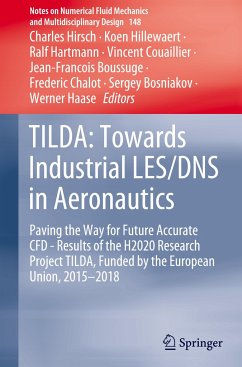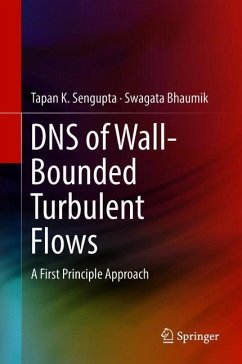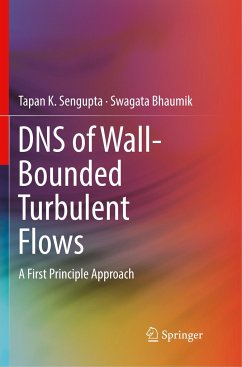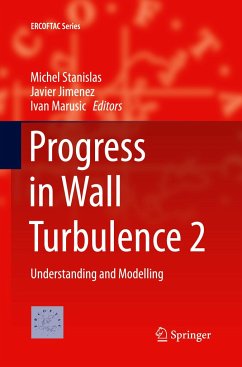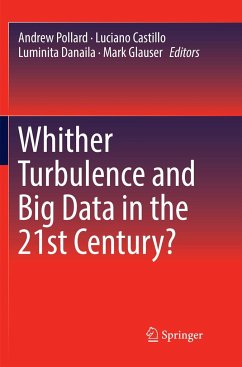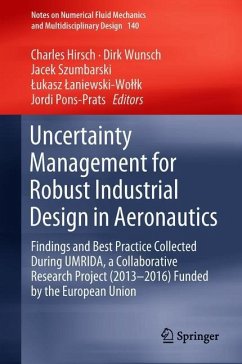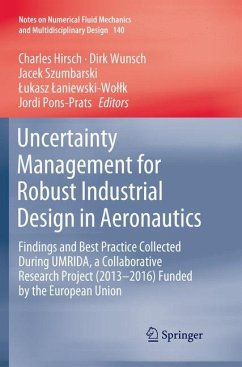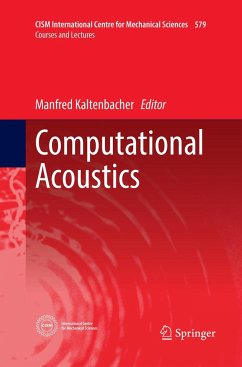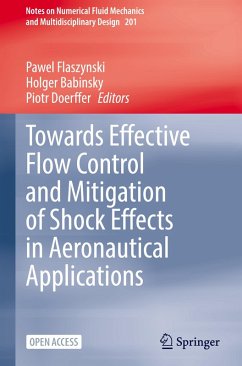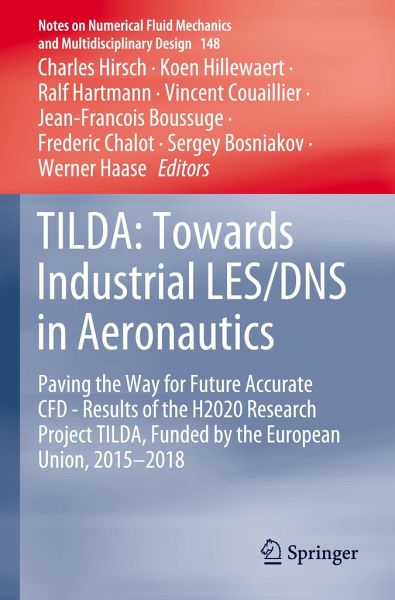
TILDA: Towards Industrial LES/DNS in Aeronautics
Paving the Way for Future Accurate CFD - Results of the H2020 Research Project TILDA, Funded by the European Union, 2015 -2018
Herausgegeben: Hirsch, Charles; Hillewaert, Koen; Hartmann, Ralf; Couaillier, Vincent; Boussuge, Jean-Francois; Chalot, Frederic; Bosniakov, Sergey; Haase, Werner
Versandkostenfrei!
Versandfertig in 6-10 Tagen
151,99 €
inkl. MwSt.

PAYBACK Punkte
76 °P sammeln!
This book offers detailed insights into new methods for high-fidelity CFD, and their industrially relevant applications in aeronautics. It reports on the H2020 TILDA project, funded by the European Union in 2015-2018. The respective chapters demonstrate the potential of high-order methods for enabling more accurate predictions of non-linear, unsteady flows, ensuring enhanced reliability in CFD predictions.The book highlights industrially relevant findings and representative test cases on the development of high-order methods for unsteady turbulence simulations on unstructured grids; on the dev...
This book offers detailed insights into new methods for high-fidelity CFD, and their industrially relevant applications in aeronautics. It reports on the H2020 TILDA project, funded by the European Union in 2015-2018. The respective chapters demonstrate the potential of high-order methods for enabling more accurate predictions of non-linear, unsteady flows, ensuring enhanced reliability in CFD predictions.
The book highlights industrially relevant findings and representative test cases on the development of high-order methods for unsteady turbulence simulations on unstructured grids; on the development of the LES/DNS methodology by means of multilevel, adaptive, fractal and similar approaches for applications on unstructured grids; and on leveraging existent large-scale HPC networks to facilitate the industrial applications of LES/DNS in daily practice. Furthermore, the book discusses multidisciplinary applications of high-order methods in the area of aero-acoustics. All in all, it offers timely insights into the application and performance of high-order methods for CFD, and an extensive reference guide for researchers, graduate students, and industrial engineers whose work involves CFD and turbulence modeling.
The book highlights industrially relevant findings and representative test cases on the development of high-order methods for unsteady turbulence simulations on unstructured grids; on the development of the LES/DNS methodology by means of multilevel, adaptive, fractal and similar approaches for applications on unstructured grids; and on leveraging existent large-scale HPC networks to facilitate the industrial applications of LES/DNS in daily practice. Furthermore, the book discusses multidisciplinary applications of high-order methods in the area of aero-acoustics. All in all, it offers timely insights into the application and performance of high-order methods for CFD, and an extensive reference guide for researchers, graduate students, and industrial engineers whose work involves CFD and turbulence modeling.



